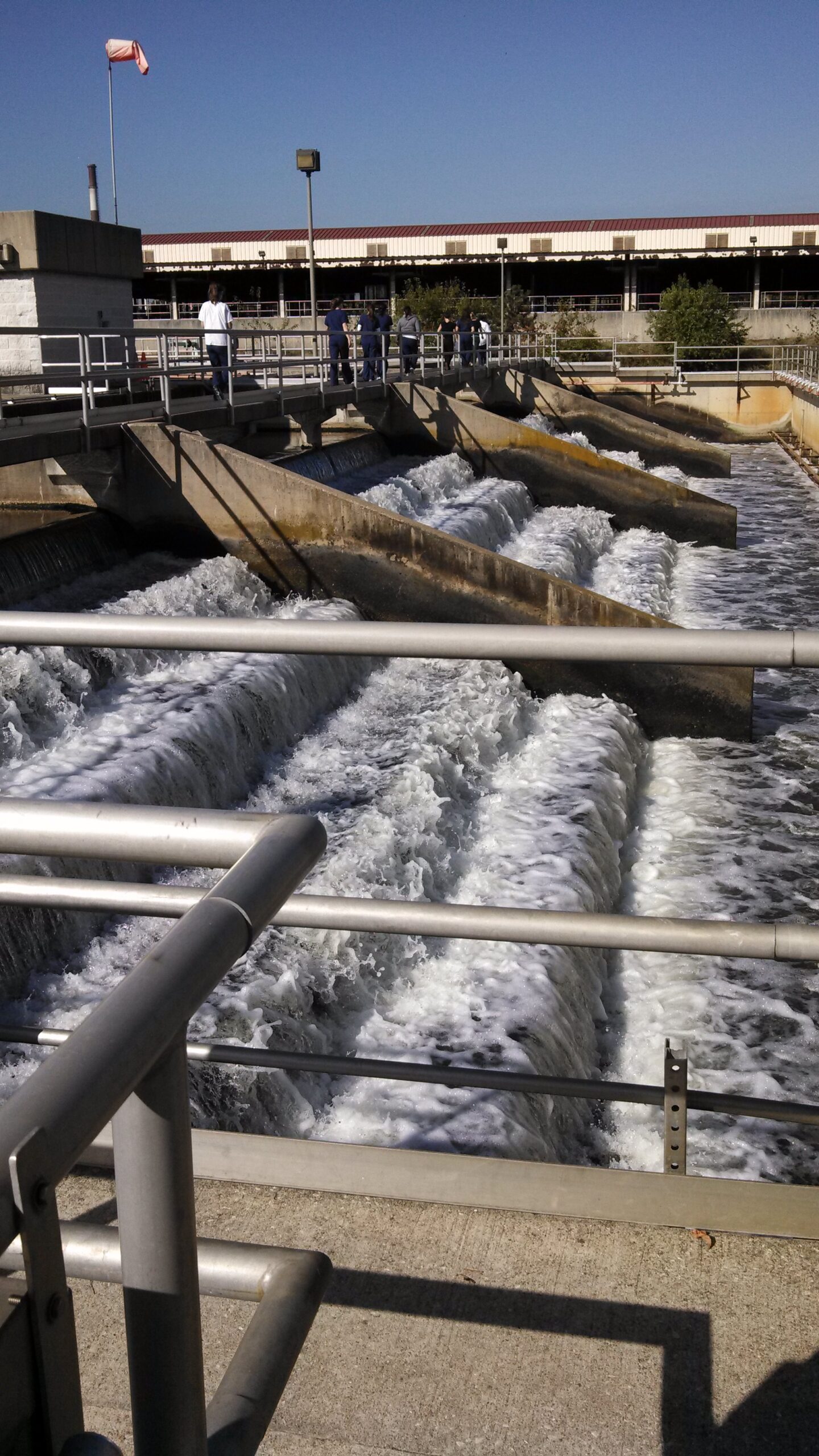As I flushed the toilet Thursday morning, I did not feel the need to say, “Goodbye forever!” I simply told the porcelain bowl’s contents, “See you later!” I usually take indoor plumbing for granted, but yesterday the group of Public Health nursing students going to Haiti took a field trip to the good ol’ Back River Wastewater Treatment Plant (BRWWTP), where the lovely Dorothy gave us a tour of the facilities and we talked (and smelled, and saw) all things poo.
[If you’re calculating whether or not you should keep reading, please keep in mind that I won’t talk about the Poo-poo Choo-choo till close to the end.]
The BRWWTP in on 466 acres of land (including a nature reserve–we saw geese and ducks and a blue heron!) and was built in 1907. It serves approximately 1.3 million residents from Baltimore City and County and Arundel county. Many people also bring their septic contents to be treated at BRWWTP; a low price for the service encourages people to dispose of their sewage responsibly.
The plant takes all the stuff going down our drains (and some storm drains) and treats it till it is safe to pour out into Back River. I think a lot of us thought it was turning toilet water back into drinking water (which scared the s%*t out of us) but our tap water is actually taken from the Susquehanna River, treated, and stored in reservoirs. Phew!
We saw lots of sewage and water at different stages of treatment. There are big vats where they use fine screens to remove the larger solid objects (such as leaves and plastic) and grit, tanks where the sludge is removed (not to be confused with scum–which includes grease and has to be “digested” differently), and big golden egg-like buildings which digest the sludge. After being kept at 98 degrees F and being broken down by bacteria for days, the sludge is safe to be passed on to a private company hired to turn it into pellets which can then be used for agricultural purposes. (Apples, anyone?) Interestingly, BRWWTP has to fulfill a quota of sludge per month so that the private company can supply its customers, a task that has been hard at times in the past because of drops in Baltimore’s population, businesses, and industries. I know what you are wondering, and yes, it is true that sometimes people have stood around at BRWWTP and shouted, “We need more poo!” It would be pure conjecture (aka a crock of ____) to assume that they were shaking their fists at the heavens while they said this.
The clarified effluent, or liquid portion of the sewage, goes on for secondary treatment. Waste pickle liquor (not to be confused with waste pickle-licker), which contains iron and is a by-product from Mittal Steel Corp, used to be added to precipitate the phosphorous from the water. However, the mill shut down so, as they say, the waste pickle liquor well ran dry. The last steps of secondary treatment and final treatment include chlorination (bleach) and aeration–the water is sent down a series of cascades that look like little waterfalls. We didn’t chase them. The water is then sent along an outfall pier and emptied into back river, where it attracts birds and fish because of it’s high oxygen content.
There are quality controls along the way–water is tested daily for toxins, pollutants and E. coli. There are also systems in place to protect the workers. For instance, in the building where sludge is removed from the liquid, if oxygen levels in the air decrease or hydrogen sulfide levels increase, an alarm will sound alerting workers to exit the building so it can be aired out. Apparently, some of our gag reflexes are more sensitive than this alarm–none of us lost our breakfast when we were awash with the poo-particle-laden air, but it was a challenge.
If you’ve made it this far, you deserve a poo-poo choo-choo reward. In 1989, Baltimore had to reclaim a 63-car train full of sludge that had been refused by Louisiana and Mississippi. It appears that a South Carolina company had been in charge of getting rid of the sludge but wasn’t going about it the right way. Chugga-chugga-poo-poo!







